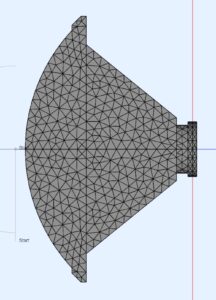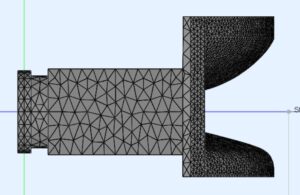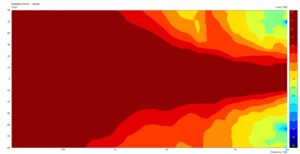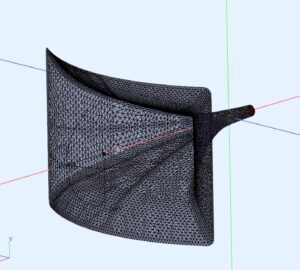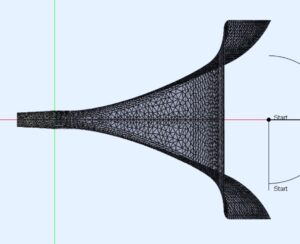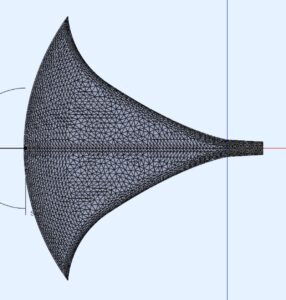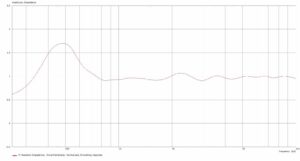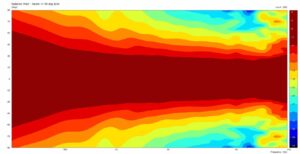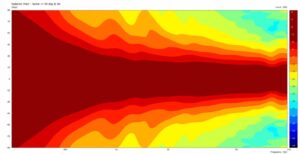Recently, I was involved in a private discussion with a guy who introduced himself as expert for home cinema setups. The topic was about a horn that could be used for a really large home cinema setup. Not what many would imagine immediately like a small room for 2-3 people. No, truly large for 10 or more people and the listening rows / seats have a third dimension in the vertical direction the more far away they are from the source. For such a setup, the horn should have very good directivity control. The person tirelessly promoted the TAD TH4003 as the ultimate solution for such setups. At that time I only knew the TH4003 horn from some pictures. But over the last years I have developed an eye for whether a horn profile meets certain requirements or not. That’s why I expressed my biggest concerns about the vertical pattern control of the TH4003. However, since I had no mesh file or STEP file of the TH4003 available at the time, no final assessment could be made. The discussion then more or less fizzled out. Some months later, a STEP file for TH4003. A few months later, a STEP file literally “fell off the back of a pssing truck” ;-), which gave me the opportunity to examine the horn more closely. I also remembered one of my first William Neile waveguides and the experiments with gentle diffraction slots and realized that I actually already had something much better in the drawer.
Many of you certainly know the TAD TH4003 horn but here again some pictures:
You may recognize that the vertical has different profiles. But in my opinion, the upper has too much curvature and the lower too less. The vertical dimension overall is quite small which will restrict the pattern control.
Many thanks to @DonVK who again helped me to create the BEM models for AKABAK. And here are the BEM results for TH4003:
The loading capabilities of the TH4003 are fine, but it has a quite sharp cut-off and below it the decay is steep. The horizontal polar are excellent up to about 4k when the horn starts to beam, and it will become even more narrow beyond 10k. Personally, I prefer a more even performance. The vertical polar are terrible for my taste, showing a very early loss of pattern control. For me, personally, I see the horn as more or less disenchanted. Not really worth to think about. Maybe it was an acceptable solution at it’s time.
As promised, now my older design that I will now retrospectively describe as a grand cinema horn. When I rediscovered this simulation it was intended for a 2 inch driver, but as TAD TD4003 used together with TH4003 is a 1.5″ driver I simply designed a throat adapter with a low expansion rate of about 250Hz. This improved the loading considerably compared to the original wave guide profile. I have to accuse the not so nice mesh quality which also negatively influenced the BEM simulations, but the export was from a very early calculator:
This horn is truly large and deserves the designation as grand cinema horn. Here are the BEM results:
The loading is also excellent and more gracefully below 250Hz. This horn will work without any problems with a crossover around 500Hz and also the pattern control is consistent at least down to this point. The sound impression will be the same at any seat in the room. The vertical is a completely other league compared to TH4003.
But the interested reader should form his own opinion, which design deserves to be called “Grand Cinema Horn”.


